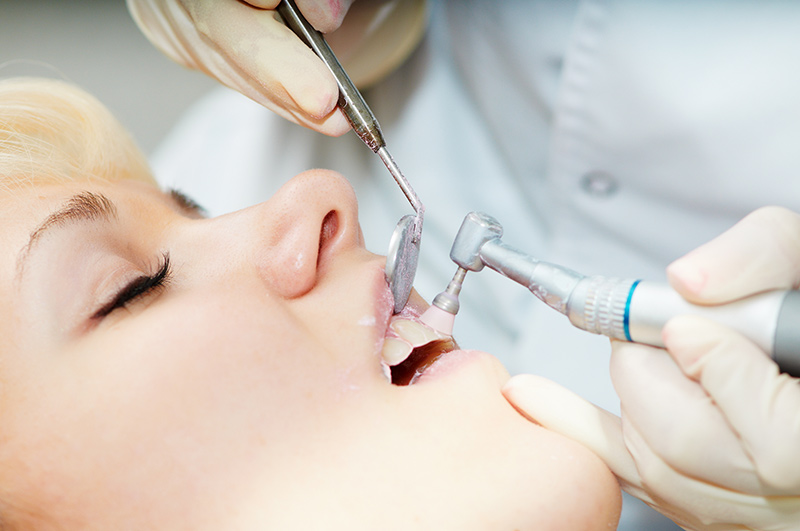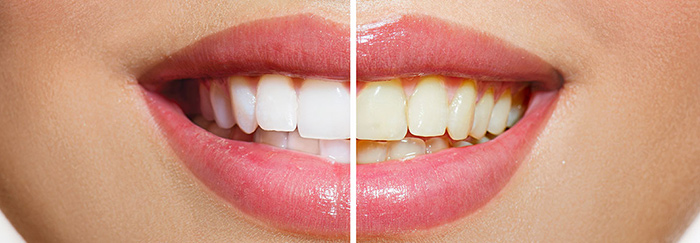Dental Care Near Me

Why are regular dental checkups so important in Woodbridge VA?
Regular dental checkups, in addition to good oral hygiene at home, are essential to maintaining the health of your teeth and gums. Regular checkup appointments typically take 20 to 40 minutes, and we suggest scheduling two of these checkups a year. Without proper care of your teeth, you run the risk of gum disease which can lead to tooth loss. Gum disease, also called periodontal disease, is an infection of the tissues that support your teeth. At each regular checkup, the dentist will measure the depth of the shallow v-shaped crevice (called a sulcus) between your tooth and gums to identify whether you have gum disease. Gum disease is caused by plaque, a sticky film of bacteria that constantly forms on the teeth. These bacteria create toxins that can damage the gums. Periodontal diseases attack just below the gum line, where ultimately they cause the attachment of the tooth and supporting tissues to break down. The two major stages of gum disease are gingivitis and periodontitis,
Are you ready for a smile makeover?
Kori Family Dentist can help patients achieve their smile goals. Cosmetic dentistry is art and science working together to provide the best in smile enhancement, restoration, and maintenance to ensure optimal dental health. Using cutting-edge technology and advanced materials, the office can work to create a beautiful, natural smile which is healthy and strong. The office can treat missing teeth with dental implants, chipped teeth with crowns, discolored teeth with advanced teeth whitening, or crooked teeth with Invisalign.
Can veneers treat gaps?
A veneer placed on top of the teeth can correct a natural gap or one which is the result of an injury to a beautiful smile. Veneers are a very popular solution because they are very natural looking. Veneers are thin, custom-made devices made of porcelain, designed to cover the front surface of teeth.
Teeth Whitening Near Me
What is teeth whitening?
Tooth whitening enhances the brightness of natural teeth. The lifespan of whitened teeth can range from 4-12 months, depending on the type of treatment used and your consumption of food and drink that can easily stain teeth (such as blueberries, coffee, and tea). To keep your teeth their whitest without undergoing tooth whitening treatment, practice good oral hygiene.
What are the benefits of dentist-supervised whitening?
Dentist-supervised treatments provide better tooth whitening results quicker than a store bought a kit. Two types of treatment are available:
- In-office procedure can whiten teeth in about five to 10 shades in roughly 50 minutes.
- A dentist dispensed take-home kit is available and contains a higher concentration of the whitening agents than a store-bought kit. It will be very easy to use
Patients are also much more likely to be more satisfied with the results of a dentist-dispensed kit than one from the store.

Teeth Fillings Near Me
What is a filling?
Filling repairs and restores a tooth that has been damaged by decay, fracture, or wear. If these issues are not repaired in early stages, the damage could spread and worsen, requiring more invasive dental treatments. Tooth sensitivity is the most common warning sign of enamel loss due to tooth decay. If you notice new or increased sensitivity, you should make an appointment to have your teeth checked.
How are filling treatments completed?
After a thorough exam of your teeth, gums and supporting bone structure, Dr. Kori will discuss treatment options with you and answer your questions. If the agreed-upon treatment is a dental filling, Dr. Kori will:
- Apply a local anesthetic to the affected area of your mouth
- Use a hand-held instrument to prepare your tooth by removing the decayed or damaged tooth surface
- Cleanse the prepared tooth to remove debris and bacteria
- Isolate the tooth using a small, protective sheet called a “dental dam” to keep it clean and free of saliva during your procedure
- Select the dental filling material based on the placement of the tooth, the location of the damaged area of the tooth, and the extent of its surface damage
- Apply adhesives and filling material to the prepared area and shape it to match the look and feel of a natural tooth
- Expose a special hand-held light to the filling material to harden the repaired surface of your tooth
What is Endodontics?
An endodontic treatment saves a severely damaged, cracked, or decayed tooth when the pulp, the soft inner tissue in the tooth’s root canal, becomes inflamed or infected. Often, when treatment is delayed, pain and even a tooth abscess can result. Endodontic treatment is commonly known as a root canal.
What are the trouble symptoms I should look for?
Come into the office if you experience any of these symptoms:
- Tooth or gum pain, discoloration, or prolonged sensitivity to heat or cold
- A tooth which is tender
- A tooth abscess
- Pus in or around the tooth
- Swelling or tenderness in the lymph nodes under the jaw
Occasionally, an endodontic problem doesn’t present any symptoms. In these cases, an x-ray is often taken to determine if more serious treatment is needed.
What is a root canal?
Root canal treatment is done to remove the diseased or damaged pulp. Root canal treatment is typically done in one or two visits, depending on the severity of the damage to the tooth. Afterward, the tooth will act like any other tooth. With good oral hygiene, the tooth should recover well.

ClearCorrect Aligner System Near Me
ClearCorrect is a clear aligner system used to straighten teeth as an alternative to traditional braces. Similar to other clear aligner brands (like Invisalign) available to dentists or orthodontists certified to offer them to their patients, ClearCorrect straightens teeth using a series of clear, custom-made, removable aligners that gradually move teeth a little bit at a time, eventually correcting the teeth and smile to elicit a new, revitalized look.
What you should know?
Your records — including impressions, photographs and radiographs, along with a prescription for your custom-made aligners — are sent by your dentist to the ClearCorrect laboratory, where an exact 3-D model of your teeth is created. Your treatment team then maps out a complete treatment plan showing the gradual realignment that will reposition your teeth from their current position to where your dentist wants them to be.
How it works?
ClearCorrect treatment involves four phases of aligner therapy. Each phase requires a new set of aligners that are worn for a three-week period. The time between each phase allows for control and flexibility. ClearCorrect aligners are worn all the time, except when eating and drinking, or while brushing and flossing.
After wearing each aligner set, results will be noticeable as your teeth begin slowly adjusting and aligning to your desired smile. Periodic check-ups with your dentist are required so your progress can be evaluated and you can be given the next set of aligners. This sequence will continue until you have achieved your new smile.
Who can benefit?
ClearCorrect currently is available to treat adults and teenagers. (Compare with Invisalign Teen.) Children who might not have all of their molars and senior citizens who present with more complicated dental cases also may be candidates for ClearCorrect, but should consult with their dentists to determine the treatment option that best suits their needs.
ClearCorrect can be used to treat the following orthodontic conditions:
- Crowded teeth
- Spacing between teeth
- Overbites
- Underbites
- Crooked or turned (rotated) teeth
ClearCorrect vs. Traditional Orthodontics
In cases where ClearCorrect is not suitable for certain misalignment cases or complex bite problems, traditional orthodontics can be used. However, traditional metal braces are attached to the teeth and adjusted periodically by your dentist, and they are not removed until your treatment is complete. Also, traditional braces might hinder your ability to perform routine oral hygiene tasks and might interfere with eating and speaking.
On the other hand, the aligners are custom fit to your teeth to provide an irritation-free treatment, with nearly no adjustment discomfort.

Periodontal Disease Treatments Near Me
What is periodontal disease?
Periodontal disease is a bacterial infection of the gums and tissues which surround the teeth. It is frequently the result of the buildup of plaque and tartar along the gum line. This buildup occurs when the teeth are not routinely brushed and flossed. Medical issues such as diabetes and even consuming too many sugary foods or drinks can also contribute to the condition. There are two major types of periodontal disease: gingivitis and periodontitis. Periodontitis can lead to tooth loss and serious health problems.
What are the symptoms of the disease?
Periodontal disease is known as a “silent” disease because obvious symptoms, particularly pain, don’t frequently present themselves. Some symptoms can include:
- Loose or separating teeth
- A change in the way the teeth fit together when biting
- Bridges, fillings, or partial dentures which no longer fit properly
- Continuing redness, puffiness, tenderness, or swelling of the gums
- Bleeding gums when brushing teeth, flossing, or biting into hard food
- Gums which are pulling away from the teeth
- Persistent bad breath or metal taste in the mouth
- Pus between the gums and teeth
- A sore or irritation in the mouth which doesn’t get better after two weeks
What are the treatments for periodontal disease?
Several different things will be taken into account when treating periodontal disease. A great deal will depend on the stage of disease and the amount of deterioration affecting the gums, supporting tissues, teeth, and bone. Treatments can include scaling and root planing and periodontal surgery in some cases.


